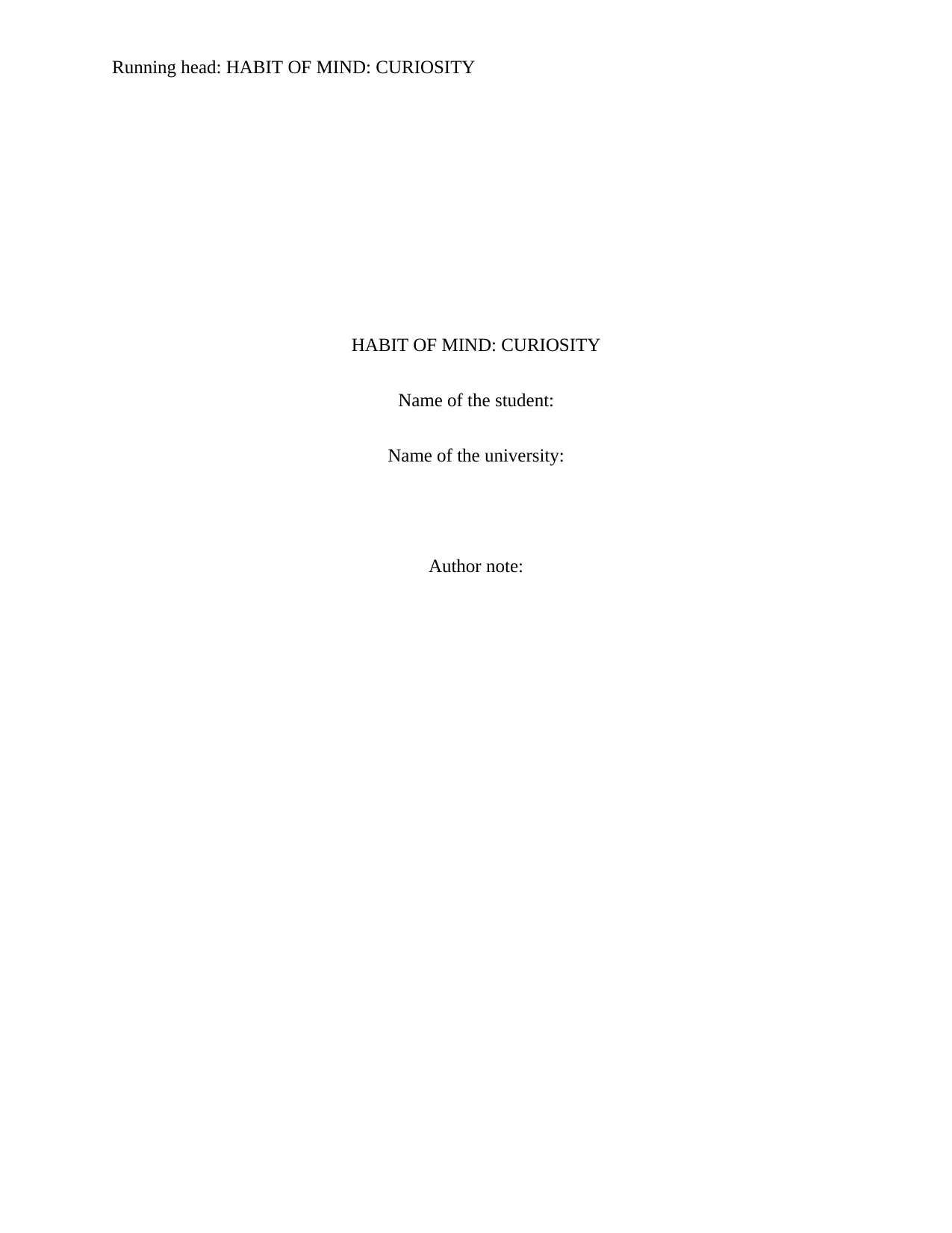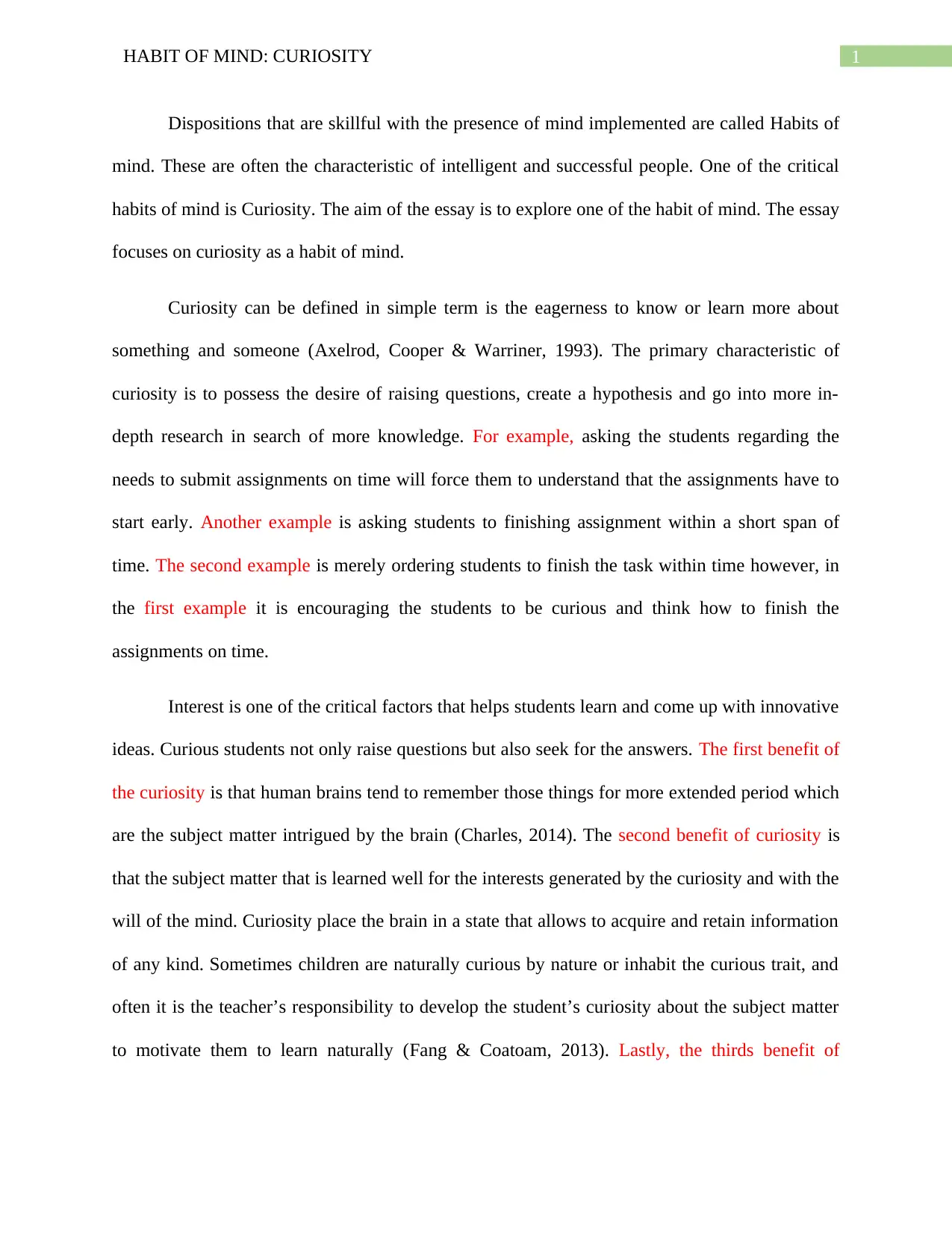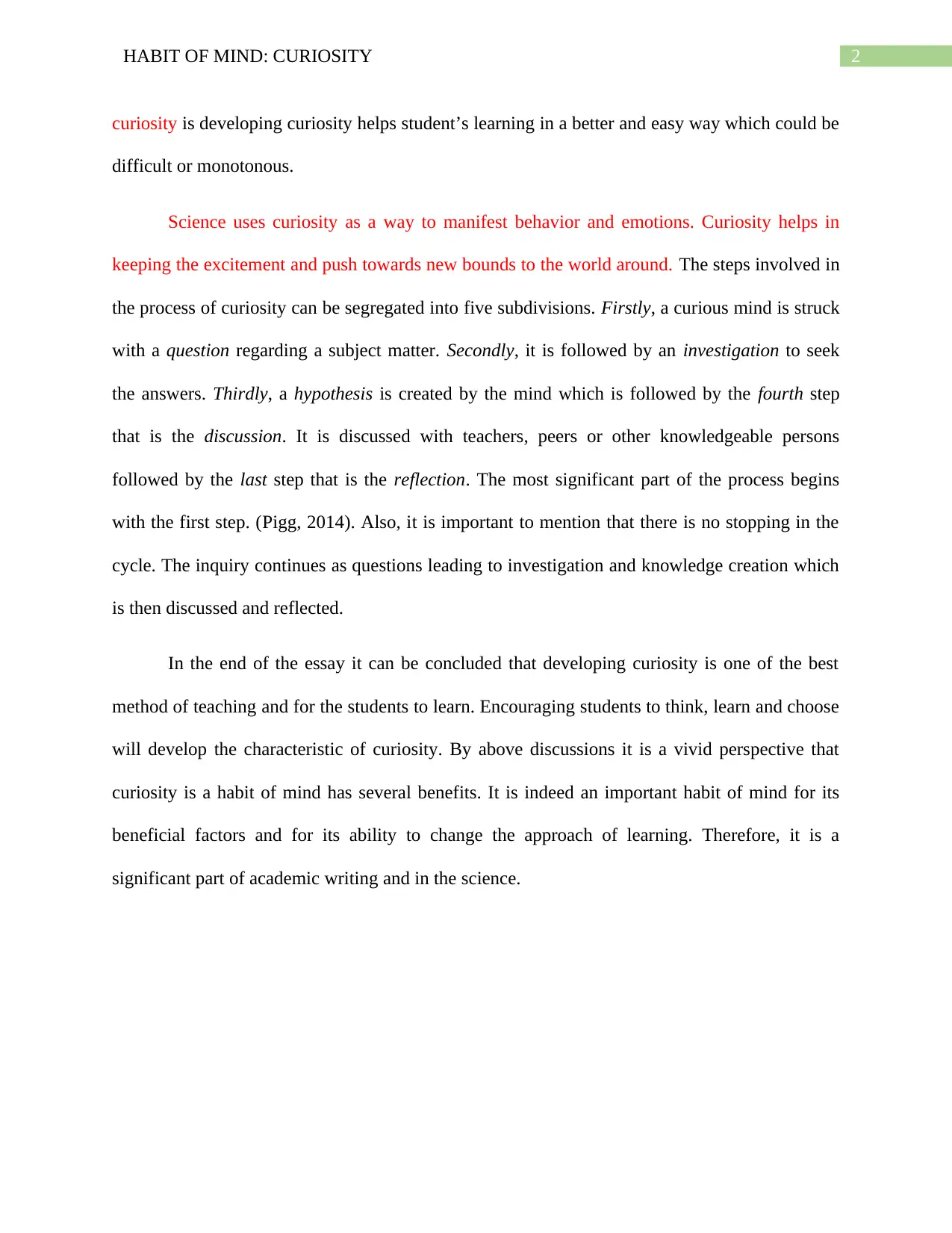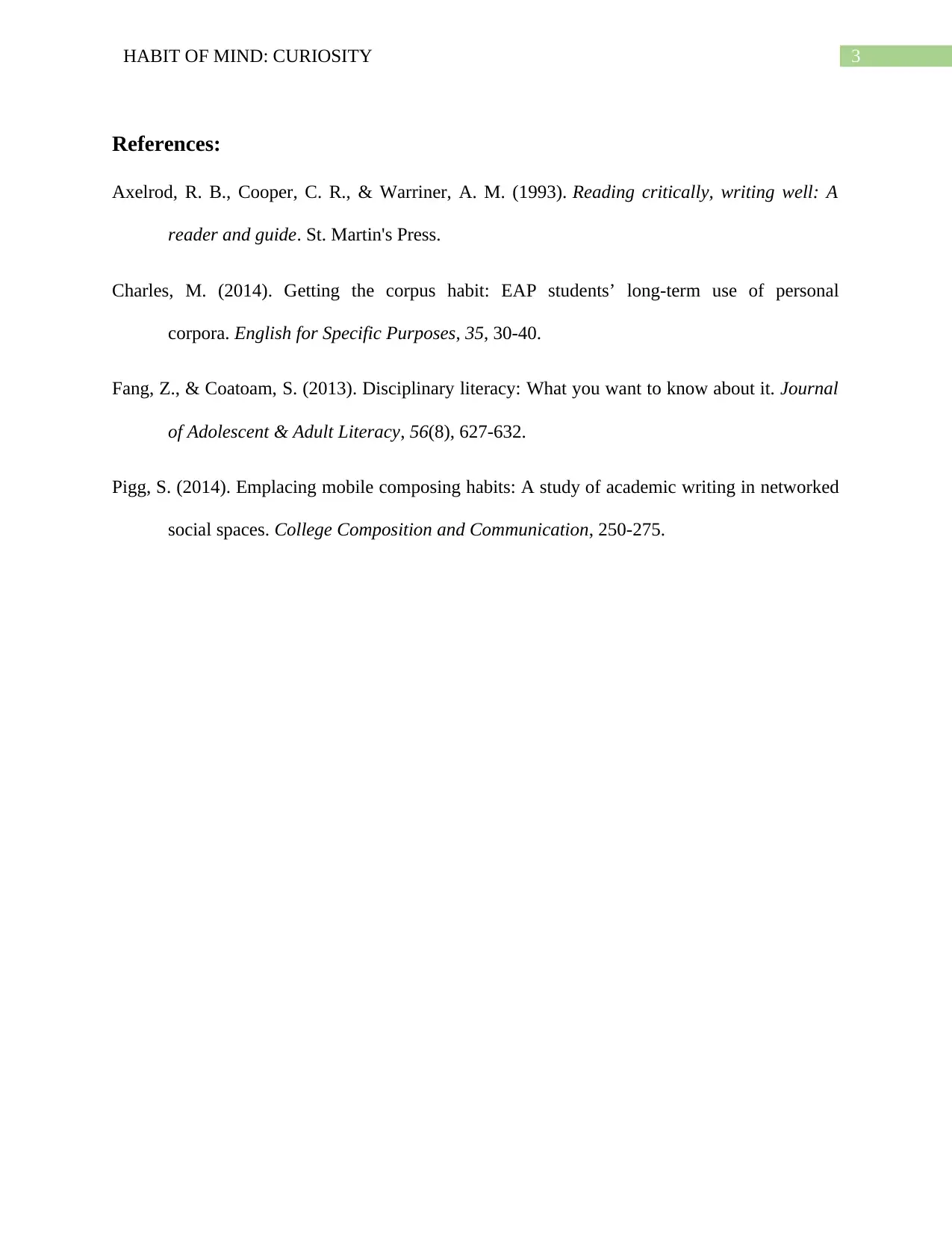Habit of Mind: Curiosity and its role in academic writing
VerifiedAdded on 2023/06/08
|4
|830
|379
Essay
AI Summary
This essay delves into curiosity as a habit of mind, defining it as the eagerness to learn and explore. It highlights the importance of raising questions, forming hypotheses, and conducting in-depth research to gain knowledge. The essay discusses the benefits of curiosity, including improved memory retention, enhanced learning through interest, and making challenging subjects more accessible. It also outlines a five-step process for cultivating curiosity: questioning, investigation, hypothesis creation, discussion, and reflection, emphasizing the continuous cycle of inquiry. The essay concludes that fostering curiosity is an effective teaching method and a valuable characteristic for students, with significant benefits for academic writing and scientific exploration. Desklib offers a platform for students to access similar essays and study resources.
1 out of 4










![[object Object]](/_next/static/media/star-bottom.7253800d.svg)